- Scientists have created a detailed map of the neural cells in an adult fruit fly's brain.
- This map could aid our understanding of how our own minds formulate intricate thoughts.
The anatomy of the human brain is one of the most perplexingly intricate enigmas in the cosmos.
Scientists from around the world have collaborated to produce the first-ever detailed map of every neuron and its connections in a fully developed brain.
This "wiring diagram", created by the FlyWire Consortium, showcases each of the 139,255 neurons in the fruit fly brain and the 50 million connections among them.
Although humans possess approximately one million times more neurons than a fly's brain, this finding brings us closer to understanding the workings of our own brain.
/'.$He says: 'Brain wiring diagrams provide a fundamental starting point for comprehending the complex processes of how we perform daily functions – controlling our physical movements, answering the phone, or recognizing loved ones.'

Despite the adult fruit fly's brain measuring less than one millimetre in size, it remains a remarkably intricate entity to investigate.
To create this trailblazing map, the brain of a female adult fruit fly was meticulously dissected into 7,000 thin sections, each only about 40 nanometers thick.
Each segment was then individually examined using a high-resolution electron microscope to uncover the cells that constitute the brain.
The final dataset occupied 100 Terabytes of storage space, equivalent to the capacity of approximately 2,500 high-definition films.
Mapping the brain's intricate circuitry, down to individual neurons and their connections.
Despite still being susceptible to some inaccuracies, a team of 287 researchers from over 76 laboratories globally reviewed the entire dataset to identify any errors.
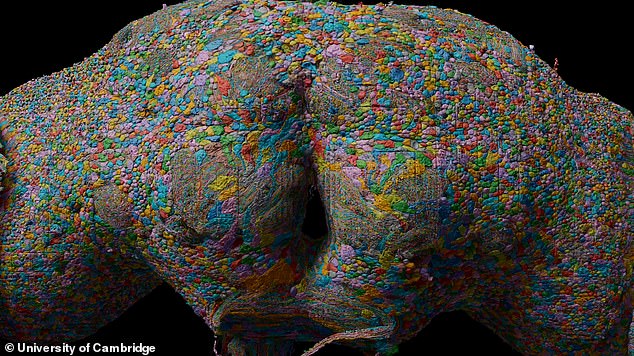
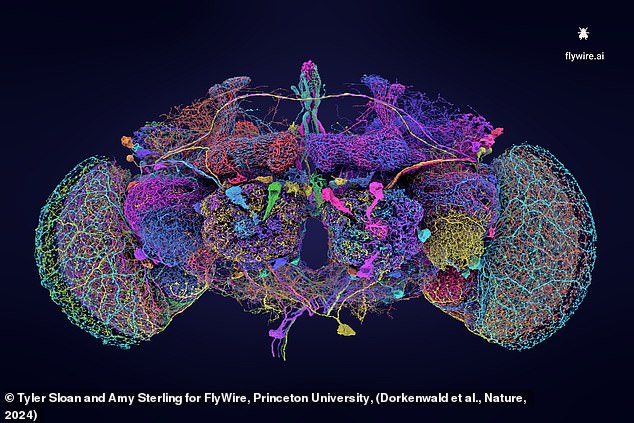
It would take an entire human life, a 33-year non-stop work span, to complete the data review in the absence of any automated tools.
The endeavor was enormous, but the outcome is the most precise map of any animal's brain ever created.
has been made openly available to the rest of the scientific community.
This latest map comprises seven times more neurons and notes 54.5 million personal connections.
(Eliminating option) - The brains of fruitfly larvae had previously been the largest ones fully mapped with 3,016 neurons, while nematodes only contained 302.
This represents the first instance in which researchers have successfully mapped the brain of a creature capable of walking, perceiving its surroundings, and exhibiting complex behavior.
The researchers believe that this could be a starting point for comprehending the underlying dynamics that enable complex behavior.
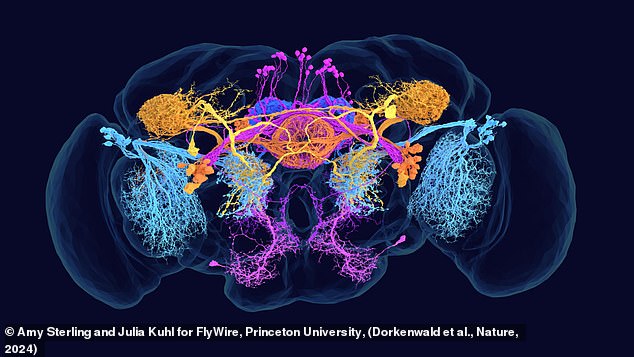
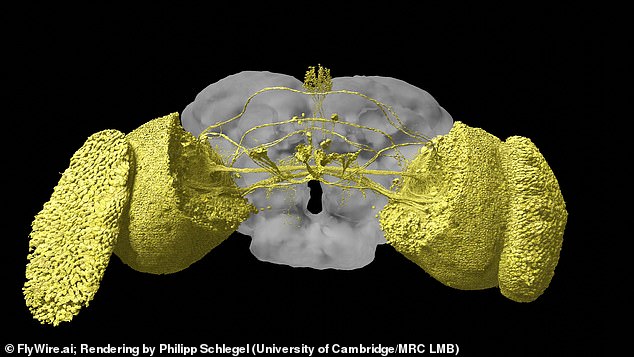
Dr. Jefferis says: 'Flies are capable of performing a wide range of complex actions, including walking, flying, navigating, and the males singing to the females.
'For a clear comprehension of how the brain functions, we must attain a mechanistic understanding of the intricate arrangement and interactions of all neurons that allow for cognitive processes.'
One discovery revealed by the research is that our brains are not as distinct as we may have believed.
The researchers found substantial similarities in the neural connections of the brain compared to previous mappings.
It appears that our brains do not consist of a one-of-a-kind configuration, but rather conform to predetermined templates.
Researchers discovered that only 0.5 per cent of neurons in the brain had wiring differences caused by variations.
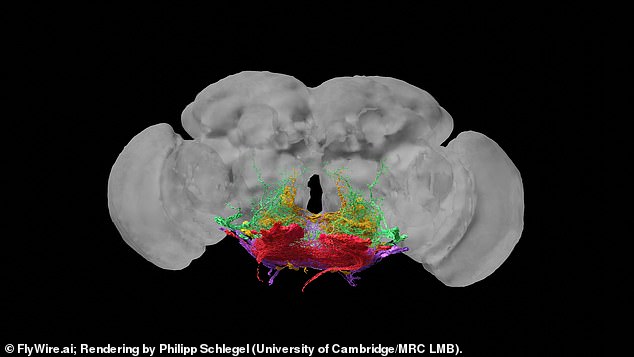
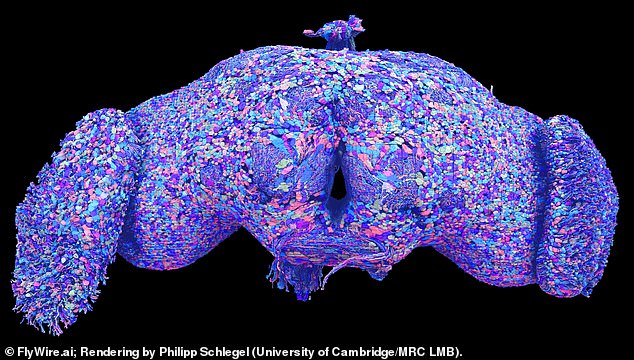
Researchers believe these aberrant neurons could be the basis of our unique personalities or neurological problems.
Determining exactly how the neurons interconnect is only the initial step in the process.
For scientists to start digitally simulating the brains of fruit flies, we need a detailed understanding of what each component of the brain is responsible for.
Co-first author Dr. Philipp Schlegel, from the MRC Laboratory of Molecular Biology, remarks: 'This dataset is somewhat similar to Google Maps, but for the brain: the raw connections between neurons are akin to understanding which geographical features on satellite images of the earth correspond to roads and buildings.
‘Annotating neurons is like adding names to streets and towns, business opening times, phone numbers, and reviews, and so on to a map – we need both to make it truly useful.’
The researchers have now identified over 8,400 distinct cell types which are responsible for functions like sight and movement, including 4,581 previously unclassified types.
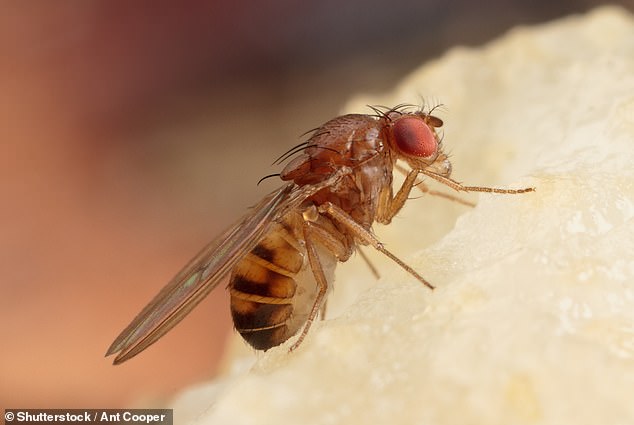
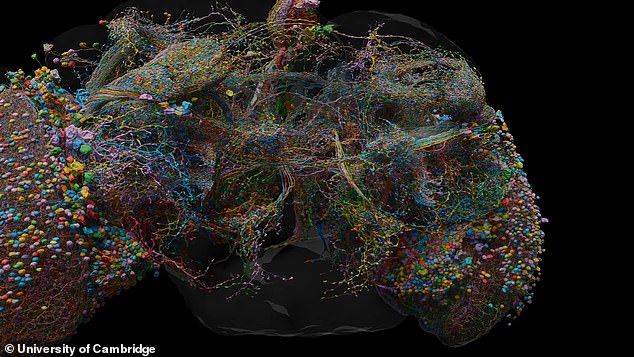
Their proficiency in recognizing forms and their perception of each other's musical compositions.
Because fruit flies are a widely studied organism in research facilities globally, researchers expect that these insights will enable a more comprehensive comprehension of brain function.
Lead researcher Professor David Bock, of the University of Vermont, notes: 'This will inevitably lead to a deeper understanding of how nervous systems process, store and recall information.
'This approach seems to outline the direction for analysis of future whole-brain connectomes, in flies as well as in other species.'
Read more


0 Komentar